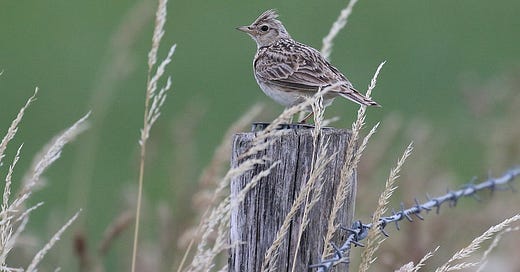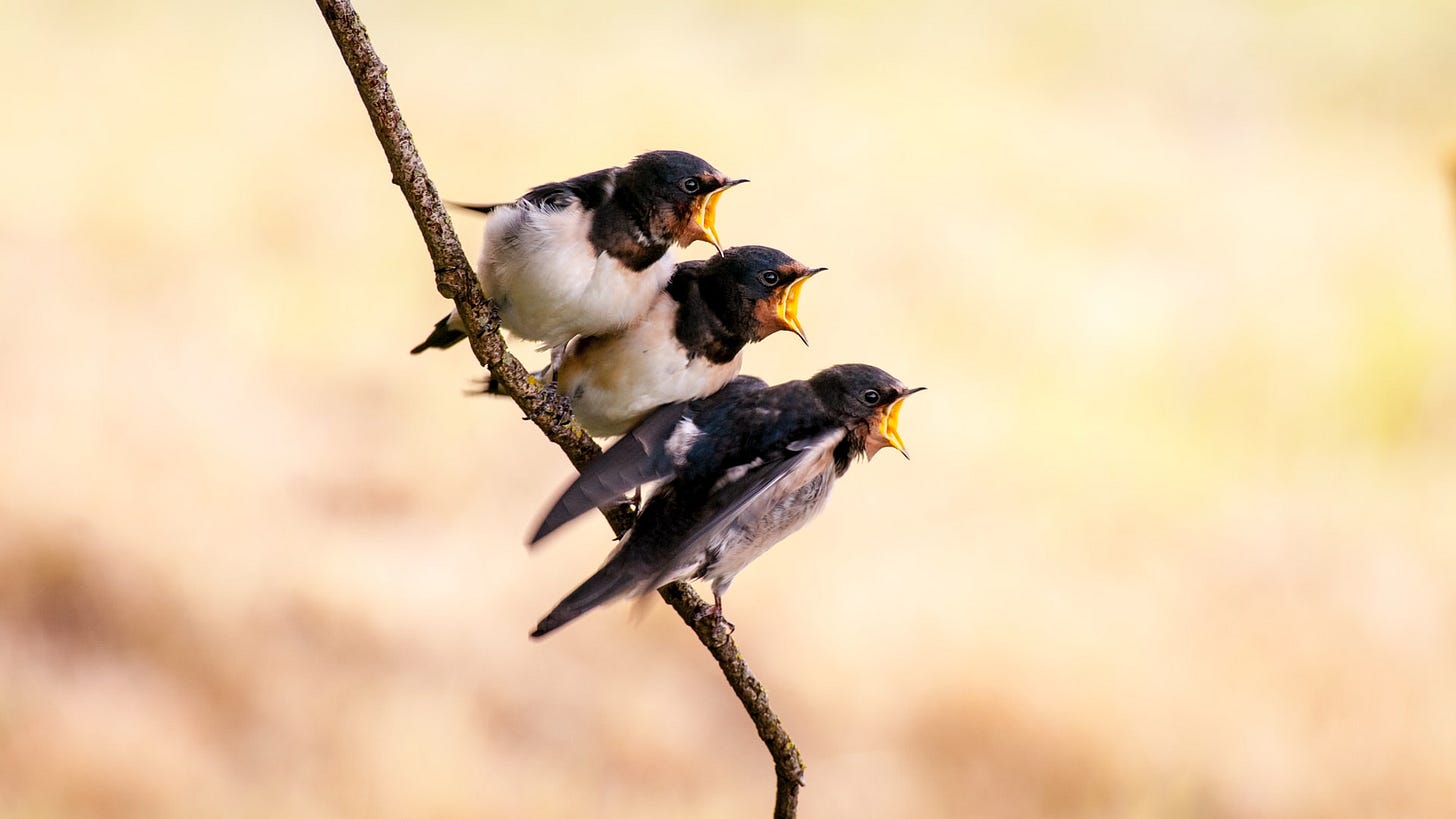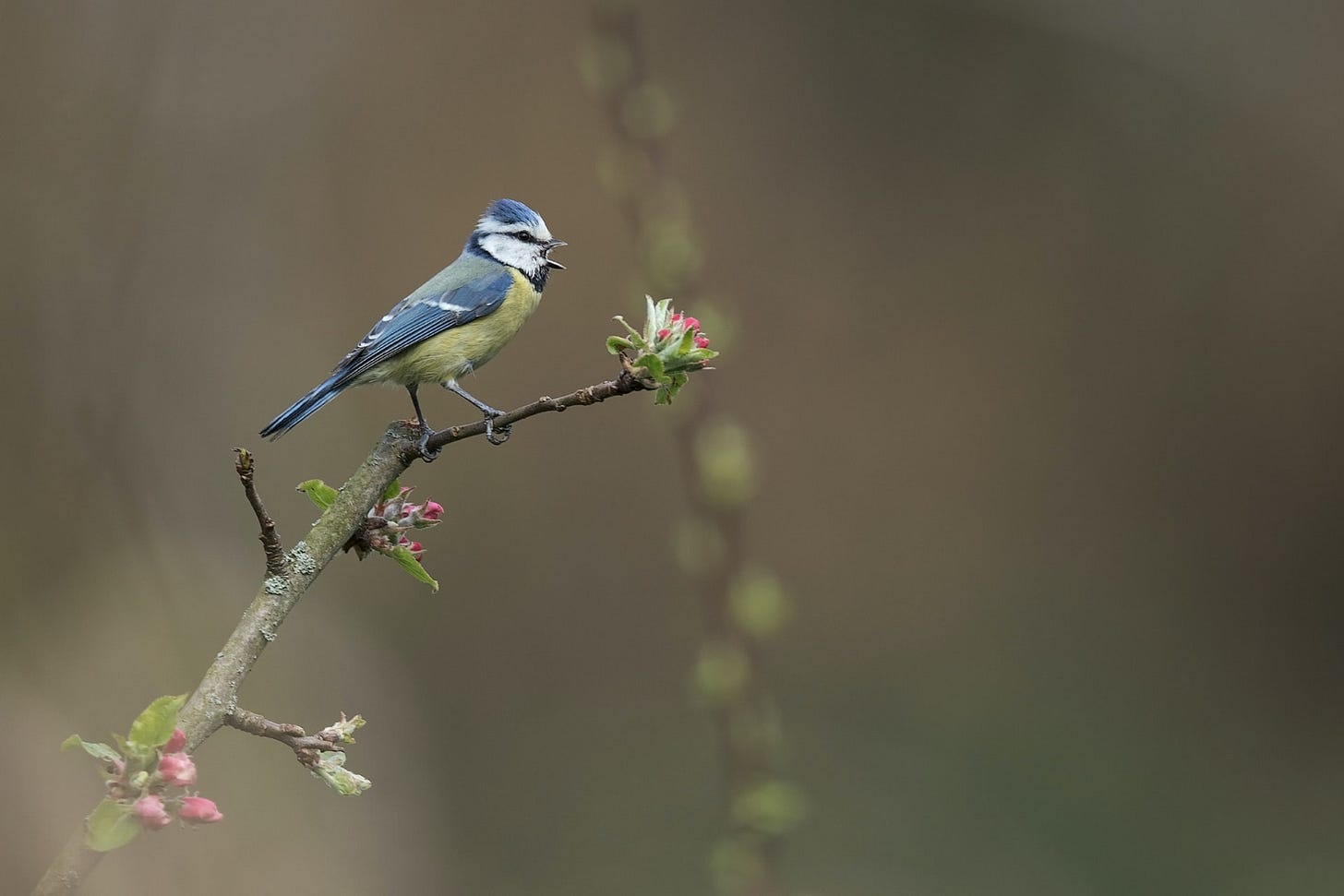The joy of staying local
The last year has forced a rediscovery of nearby nature – but will these habits outlast lockdown?
Welcome to Inkcap, a newsletter about nature, ecology and conservation in the UK, brought to you by me, Sophie Yeo.
This is your Wednesday feature. You can still read last Friday’s digest: Environmental Principles & Rewilding Statistics.
Yesterday marked the one year anniversary of the first lockdown restrictions in England. It’s been a strange year, indelibly marked by tragedy. But there have been some bright spots: in particular, for some people, the rediscovery of the natural world on their doorsteps. Today’s article, by naturalist and author Stephen Moss, examines this shift in our boundaries. His book on lockdown nature, Skylarks with Rosie: A Somerset Spring, is released tomorrow.
As ever, please consider supporting Inkcap by joining as a paid subscriber. Thank you!
A year ago, the day after the spring equinox, the whole world changed.
We were, whether we liked it or not, confined to our home patch. One year on, with a few exceptions, we still are.
Lockdown forced me to narrow my horizons: to our garden, and the three-mile walk or cycle ride around the moor behind my home, which we dubbed ‘the loop’. Like others, my initial disappointment gave way to a realisation that there is a lot to be said for staying closer to home. And as spring unfolded across the country, we realised that even if we couldn’t go to the birds, they could still come to us.
With a cold, damp and unpromising March giving way to a bright, warm and sunny April, migrants began to arrive from Africa: swallows and swifts, whimbrels and wheatears, and a host of warblers, flooding the air with their sweet songs. They reminded me that while we humans might be confined to one locality, they were free to come and go as they pleased.
The warblers turned up roughly in the order of the closeness of their winter-quarters. Thus chiffchaffs, most of which overwinter in Spain, Portugal and North Africa, began singing their jerky, eponymous song in mid-March. A few days later, another short-distance migrant, the blackcap, also began singing at the end of our garden. Its presence reminded me that the poet John Clare dubbed this early songster the March nightingale.
Our commonest summer visitor, the willow warbler, passed through on April 9th, briefly delivering its plaintive song before moving on northwards. Then, in an action-packed four-day spell towards the end of the month, the long-distance migrants arrived. Sedge and reed warblers, common and lesser whitethroats – all of which winter south of the Sahara – brought a welcome touch of Africa to my little corner of the West Country. Last spring, I appreciated them more than ever.
Around this time, I rediscovered the joys of ‘slow nature’. I am not the most patient of people, preferring cycling to walking for the way it covers the ground more quickly. But now, with more time to spare, I began taking long and languorous walks around the loop, accompanied by our fox-red Labrador, Rosie.
I soon realised that I was noticing far more than I normally would: two roe deer, watching me furtively from the corner of a field; a pair of swallows courting in the skies above the local farmyard; and nesting mute swans, which my wife Suzanne and I watched throughout the first part of lockdown, until their four cygnets finally hatched in mid-May.
I also remembered that I had been in this situation before. When we arrived in Somerset 15 years ago, our three children were all toddlers; so, for the first couple of years or so, our garden became my ad hoc home patch. Whenever I was out playing with the children, or mowing the lawn, I would habitually carry binoculars, in case something new and exciting flew overhead. From time to time, it did. During that first year, as well as the usual fare, I saw Mediterranean gull and flocks of golden plovers – neither of which I have seen here since.
But as the children grew older, I began to explore further afield; and soon discovered the joys of the Avalon Marshes, a few miles down the road. The winter gatherings of starlings, the booming of bitterns, and exciting new arrivals including cranes, great white and cattle egrets, all made the quotidian wildlife of our garden seem a bit, well, dull by comparison. A few years ago, I also started visiting a coastal patch, where three rivers – the Brue, Parrett and Huntspill – join together, and where almost anything can, and does, turn up.
With these places temporarily out of bounds, I began to understand – perhaps for the first time – the way naturalists in the past related to their home patches. Men like John Clare and Gilbert White, and women such as Eleanor Glanville, the pioneering seventeenth-century butterfly enthusiast, who lived just up the road from here.
For much of their lives, by necessity, they would have been confined to the area around their home. As a result, they got to know not just the fauna and flora of their country parish, but every natural landmark, too.
By the time Rosie and I had completed the circuit for the umpteenth time, I was beginning to notice the tiny details I had been too busy to appreciate before: a particular tree or hedgerow, or the way the light subtly changed the nature of the landscape at different times of day.
I wasn’t the only one. Up and down the country – and indeed all over the world – people were discovering, or rediscovering, the joys of staying local. Then something truly extraordinary happened. Thanks in no small part to social media, we heard from friends and colleagues from far-flung corners of the globe, who told us about the wildlife they were encountering on their own home patches.
Hearing news from across the Atlantic, where spring was arriving at roughly the same pace as here, or Australia and South Africa, where the seasons were instead slipping from summer into autumn, was both comforting and wonderfully uplifting.
It would be easy to assume that local wildlife is somehow inferior to what we can experience by travelling further afield. But consider these figures: within just a mile from my home, during the time I have lived here, I have seen almost 100 species of birds, two dozen different mammals, and more than a score of butterflies. Extending this a little further, to my home county of Somerset, those figures rise even higher.
This means that in the small area around my home I have seen between one-third and one-half of all regular UK species from these groups; in the county as a whole, that proportion rises to around two-thirds.
My observations show that far from local wildlife being a poor shadow of what is available elsewhere, it can be surprisingly rich and varied. Whether this will lead to a change in our wildlife-watching habits is hard to tell. Many naturalists are embracing the idea of a ‘local patch’, while twitching – rushing all over the country to see a rare bird – appears to be in decline.
And while many of us hanker after travelling to far-flung locations around the world to see exotic species, the constraints of the pandemic, along with growing concerns about our carbon footprint, may also lead people to spend more time watching wildlife on their doorstep.
Meanwhile, nature writers like myself also face a dilemma. Do we continue to focus more on what we experience locally, as we have been forced to do by the pandemic? Or should we expand our horizons to deal with more global concerns – notably the worldwide loss of biodiversity, and the climate crisis, which together threaten all our futures.
Perhaps we can all take inspiration from those returning migrants. A year on from the start of the crisis, as once again I walk Rosie around the loop, I eagerly anticipate the flash of a wheatear’s white rump, the twittering of the first swallow, and the scratchy song of the sedge warbler. They don’t just signal the true arrival of spring but also the global connections we all share. Most importantly, perhaps, after a year unlike any other, they bring us new hope.
Skylarks with Rosie: A Somerset Spring, by Stephen Moss, is published by Saraband (£12.99)
Inkcap is 100% reader-funded.
If you value independent environmental journalism, please consider supporting Inkcap by becoming a paid subscriber. (If it takes you to the landing page, simply re-enter your email.)
Got a question? You can get in touch by replying to this email, or read the FAQs.
Image credits: Brendan Ryan, Arjan Stalpers, Hans Veth







What a lovely reflection. Impressive to see 100 birds around your home patch, if you slow down enough to notice them!